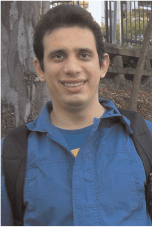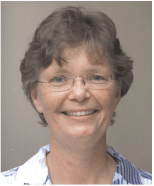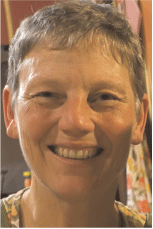Post Jurassic shortening in the western Surat Basin relative to underlying basement depth and faulting
Abbas Babaahmadi A , Renate Sliwa B and Joan Esterle CA School of Earth Sciences, The University of Queensland.
B Integrated Geoscience Pty Ltd.
C The University of Queensland.
The APPEA Journal 56(2) 597-597 https://doi.org/10.1071/AJ15103
Published: 2016
Abstract
The Hutton-Wallumbilla (HWF), Merivale (MF), Kia Ora, and Injune faults are the major structures in the western Surat Basin, deforming Palaeozoic to Jurassic rock units. The authors present results from the interpretation of gridded gravity data and open-file seismic reflection data, which provide constraints on the geometry and kinematics of these faults.
The interpretation of gravity data indicates that the HWF and MF are expressed by sharp lineaments in moderate to high-amplitude anomalies, indicating a deep-seated nature of the faults. The interpretation of seismic lines shows that the HWF and MF are northeast-dipping and east-dipping reverse blind faults, respectively. Some other faults also displaced and folded the rock units of the Bowen and Surat basins, such as the Kia Ora and Injune faults. The MF, Kia Ora, and the northern part of the HWF acted as normal faults during the early Permian and then have been inverted during the Late Permian–Triassic Hunter-Bowen Orogeny phases, especially during the early Late Triassic. The largest fault throws in the Bowen Basin successions are observed along the southern part of the HWF and its central splay, which are around 350 m and 480 m, respectively. The stratigraphic units of the Surat Basin above it have gently been folded over the major blind faults. The largest amount of shortening in the Surat Basin has taken place over the southern part of the HWF by 0.5%. The basement depth played an important role in the amount of contractional deformation in the Bowen and Surat basins. Where the basement is shallow, the amount of deformation along the faults in both the Bowen and Surat basins is higher.

Abbas Babaahmadi received his PhD degree from the University of Queensland (UQ). His main research areas include structural geology and tectonics. He is focusing on the tectonic history of eastern Australia from the Permian to Cenozoic, through analysis of fault systems by use of geophysical data (potential field and seismic reflection data), satellite images, digital elevation models, and field observations. Abbas has also been working on active tectonics and geological hazards (e.g., landslides) of western Iran, and now works as a postdoctoral research fellow at UQ’s School of Earth Sciences. The main aim of his research is understanding the kinematics and reactivation history of faults in the Permian–Triassic and Jurassic basins (the Bowen and Surat basins) in eastern Australia. |

Renate Sliwa is a structural geologist with 26 years’ experience in regional- to mine-scale structural analysis, with a strong focus on coal mining hazards and the interpretation of geophysical data. She gained her PhD from the University of Queensland in 1994, and worked as a consulting geoscientist nationally and overseas before joining the CSIRO in 1999, where she contributed to a detailed regional analysis of the coal measures in the western Bowen Basin as well as a number of mine-scale studies across Australia and India. Renate has been consulting independently to coal and coal seam gas companies since 2008, and joined the University of Queensland as an Adjunct Senior Research Fellow in 2013. She is presently contributing to a number of large regional projects at the university that examine the effects of multiple regional deformation events on coal seam distribution and fracturing in the Bowen and Surat basins. |

Joan Esterle is a coal geologist with a PhD from the University of Kentucky (1990). Following a career with CSIRO (1992–2008) and GeoGAS Runge (2008–10), she joined the University of Queensland full time, taking up the chair of the Vale-UQ Coal Geoscience Program. The group has grown to more than six senior researchers and some 20 undergrad and post-graduate students working across a range of projects in 2015. Her main research questions focus on geological controls on the origins and distribution of coal and gas in coal, gas and coal production, overburden geotechnical variability, and coal material properties. These applied research projects are underpinned by a fundamental understanding of peat and coal formation. Joan’s projects are supported through the Australian Coal Association, the Centre for Coal Seam Gas, Australian Low Emissions Coal fund, the Department of Natural Resources and Mines, and a suite of companies. |
References
Babaahmadi A. Rosenbaum G. (2014). Late Mesozoic and Cenozoic wrench tectonics in eastern Australia: insights from the North Pine Fault System (southeast Queensland). Journal of Geodynamics 73, 83–99.Babaahmadi, A., Rosenbaum, G., and Esterle, J. (2015a). Alternating episodes of extension and contraction during the Triassic: evidence from Mesozoic sedimentary basins in eastern Australia. Australian Journal of Earth Sciences 62, 563–79.
Korsch, R.J, Totterdell, J.M, Fomin, T., and Nicoll, M. G. (2009a). Contractional structures and deformational events in the Bowen, Gunnedah and Surat Basins, eastern Australia. Australian Journal of Earth Sciences 56, 477–99.
Korsch, R.J, Totterdell, J.M, Cathro, D. L., and Nicoll, M. G. (2009b). Early Permian East Australian Rift System. Australian Journal of Earth Sciences 56, 381–400.
Nabighian, M., Grauch, V., Hansen, R., La Fehr, T., Li, Y., Peirce, J., Phillips, J., and Ruder, M. (2005). The historical development of the magnetic method in exploration. Geophysics 70, 33–61.
Oz Seebasetm, 2005—Public domain report to Shell Development Australia. Brisbane: FROGTECH Pty Ltd.
Sliwa, R., 2013—Eastern Surat Basin structural framework from 2D seismic interpretation. Confidential report. Brisbane: Arrow Energy Limited.


